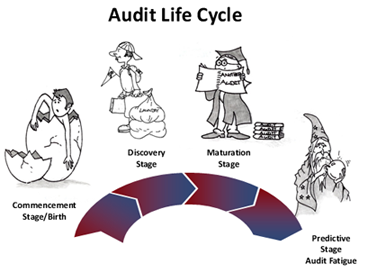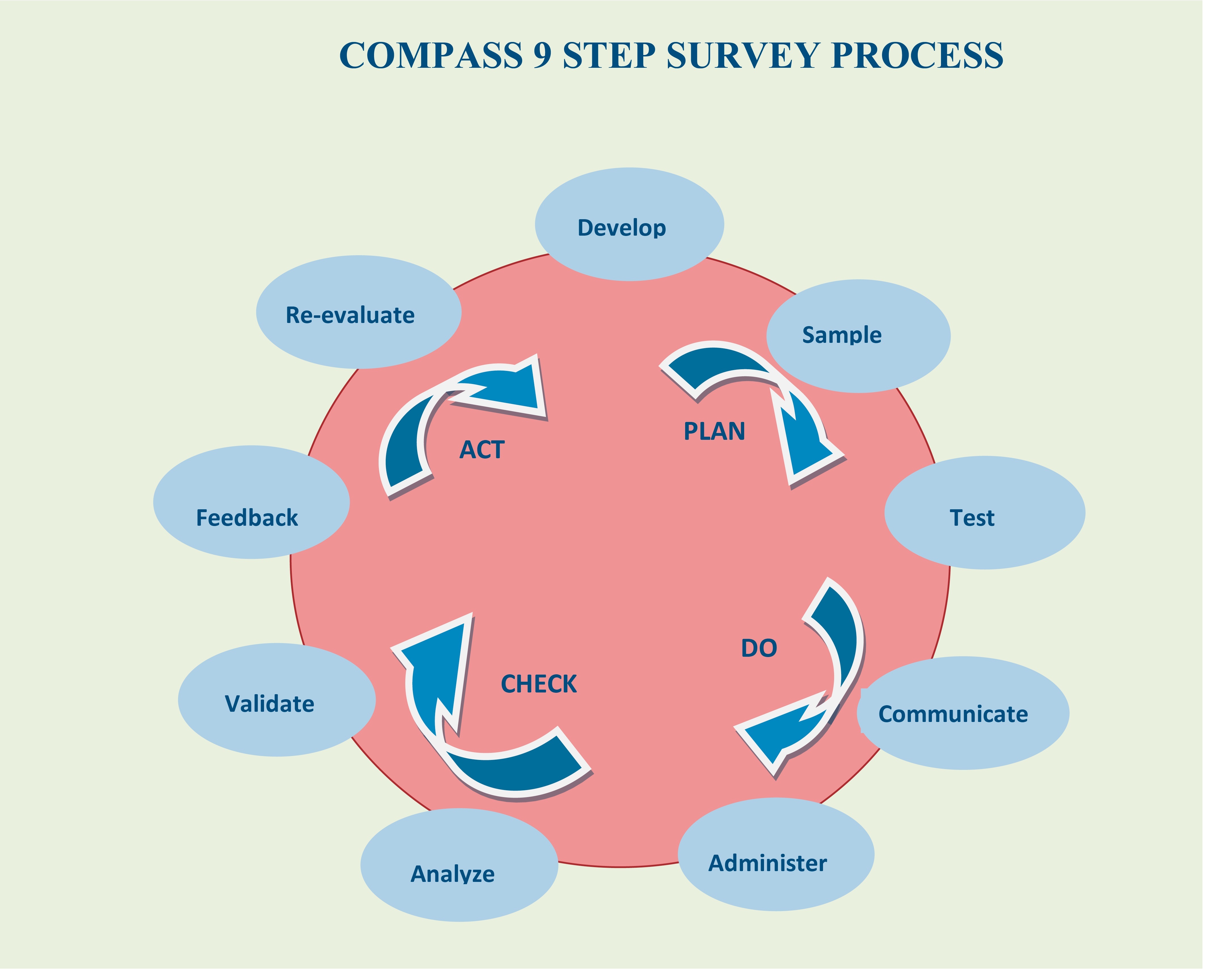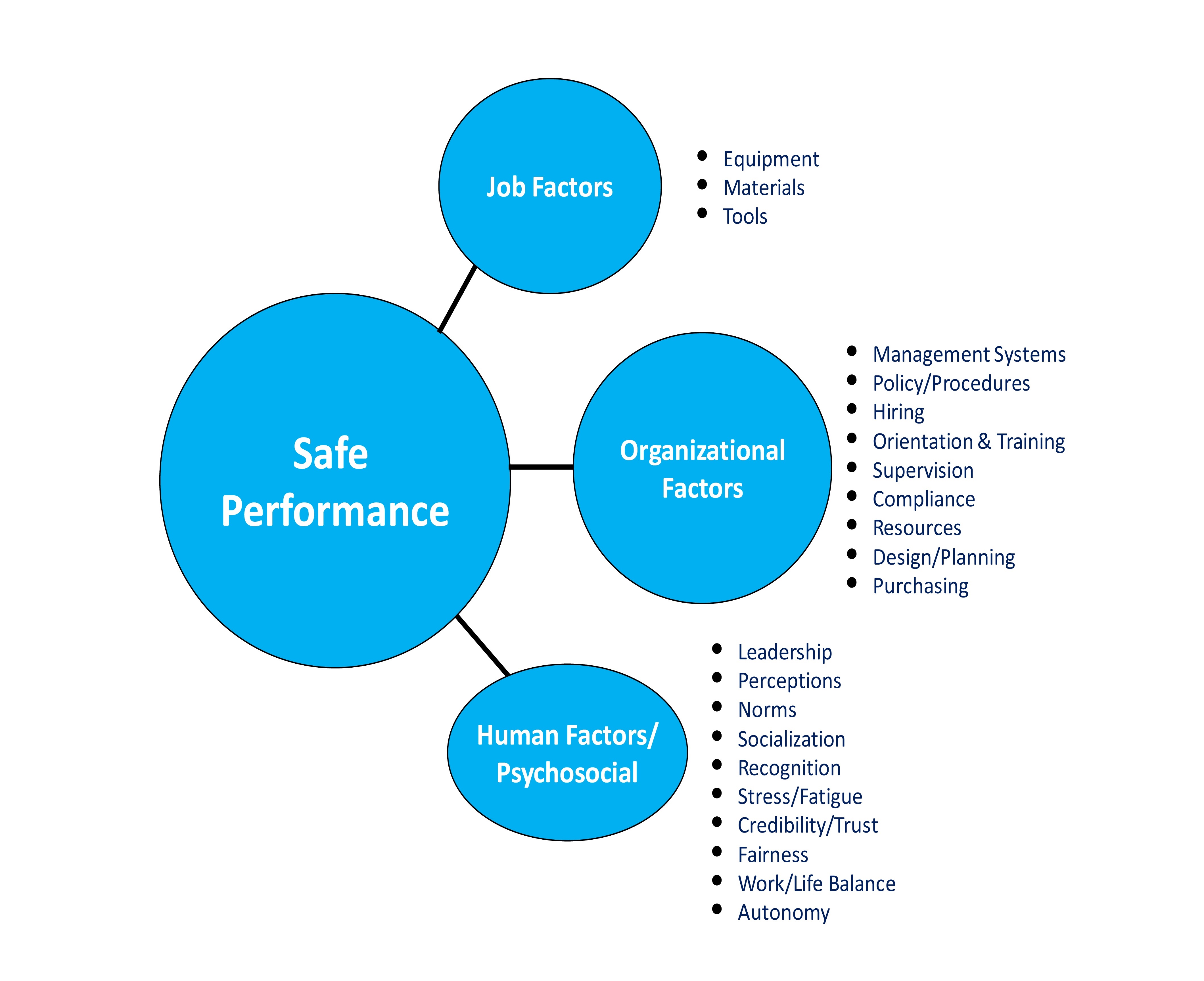SAFETY PERCEPTION SURVEYS
Our Goal
Compass Health & Safety Ltd. is determined to ensure all companies get the opportunity to benefit from the safety perception survey process – not just the few companies that can afford to pay for expensive survey consultants. We have developed a survey approach that is available and affordable for every company. We aim to guide every one of our clients through the survey process so that their surveys succeed in revealing useful preventive information.
Why we Exist
We have experienced first hand the power of safety perception surveys. Twenty years ago while managing a health and safety program for a large utility, I witnessed incredible cultural and lost time incident statistical improvements that could only be accredited to listening and responding to what employees had to say about their work environment. This company went from a utility with one of the worst lost time incident rates in the country to the best within two years.
From this success and others, I felt compelled to spread the word about safety perception surveys. Over the last ten years we have worked hard to develop a survey process and web-based survey application to help safety associations, union groups, safety consultants and companies of all sizes, harness the power of the safety perception survey process. To make the process affordable we developed a do-it-yourself approach. We wrote a book explaining the process. We developed a powerful and flexible web based survey application to serve the needs of all of our customers. Now we want to share our survey process with you.
Why we Need to Explore Health and Safety Performance Assessment Alternatives
The health and safety profession needs to reassess how it evaluates health and safety systems. Current approaches are not significantly improving health and safety. National fatality rates are flat to rising. Incident statistics as a leading performance indicator have failed us. We all now know that historical incident statistics are a poor guide to future performance. Many of our system audit processes have not kept up with what it takes to evaluate the health and safety management system and provide guidance to excellent safety performance. Many auditors are under trained and under qualified to properly assess safety performance (more on this in our articles section under What’s New – Articles –“Are you suffering from Audit Fatigue“). Audit protocol questions are primarily derived from material proposed 86 years ago by W. H. Heinrich. Recent leading system research has not been incorporated into these audit protocols and therefore they often fail to help companies achieve the safety excellence they promise. (There is more information on the audit issues on this website, some below and more under What’s New section of the website – see Articles “Yes, there is a cure for Audit Fatigue and Audit Paralysis”).
Safety perception surveys are offered by some very large well known companies involved in survey consulting. They draw their approaches from renown safety leaders such as Dan Petersen who pioneered safety perception survey work in the 70’s and 80’s. At the time this, work was ground breaking. New research has revealed many safety determinants that are not, or have not, been incorporated into the surveys currently offered. Compass has incorporated new research into our master question list such as on “work life balance and job satisfaction and job security”. Our clients can select questions from our master question list, create their own or use one of our off the shelf surveys. With Compass, your survey can incorporate the most recent research into health and safety performance.
Is your company suffering from Audit Fatigue?
Audit fatigue is a condition or state that a company reaches when it has repeatedly used safety audits to assess their health and safety management system. Year after year these companies use the same audit instrument and asked employees the same questions. From one year to the next they gain less benefit from this repetitive process. The Audit Life Cycle starts with the Commencement and Development Stages (see figure below). When a company decides to first audit they generally do so to see where they stand relative to the audit protocol requirements. As time progresses, their program Matures. At some point after that they reach the Predictive Stage. The information coming from the audit becomes very predictable. At this stage, companies find audits offer no new preventive insights. When companies get to this stage in their audit life cycle, it is time to look at alternative assessment approaches as the return on their dollar is very low. If your company has ‘audit fatigue‘ it may be time to try a different measurement approach such as a safety perception survey.
“We’ve reached a plateau and we can’t seem to move off.”
Contemporary audit protocols and many perception or climate surveys focus on measuring compliance to legislation (e.g. first aid, reporting, fire safety, WHMIS, safety committee meetings, etc.) and on basic health and safety program elements (e.g. inspection, investigation, risk assessment, etc.). Many of these assessment tools have not kept up with new health and safety management research.
Compass has an 9 step do-it-yourself safety perception survey approach (see figure below) that helps companies identify key employee perceptions that could be preventing companies from continuing to improve. Compass also has a master question list of over 150 survey questions. Many of these questions incorporate current safety excellence research. Our survey system is exceptionally flexible. For example,
- you can use one of our off-the-shelf surveys
- you can use a survey required by a Government authority or Safety Association
- you can add company specific questions to the above surveys and toggle on or off specific results. This allows companies the opportunity to meet survey requirements of other authorities and make the survey company specific
We encourage companies to develop their own company specific survey. We believe that each company is unique in its’ survey needs. If you have a fleet, you should include fleet safety related questions in you your survey. If you have contractors, you may want to include questions to help assess contractor safety management. Compass will guide you through the 9 step do-it-yourself process to ensure your survey meets your needs.
A Safety Perception Survey will help you understand why, your company has not achieved safety excellence.
“Contrary to popular belief, cultivating a high-trust culture is not a “soft” skill — it’s a hard necessity. Put another way, it’s the foundational element of high- performing organisations”
– Stephen M. R. Covey
To achieve safety excellence you need to know whether your employees are faced with social or organizational pressures that influence them to work unsafely. You need to know if , their performance is being affected by psychological factors such as a poor work life balance. You need to know if employees trust management and considered them to be credible. And, it goes without saying, you need to know how employees perceive the effectiveness of standard safety elements such as training, reporting and investigation, etc. We can help you create and/or incorporate appropriate questions in your survey to get answers to all these questions. All survey consulting companies claim to have the definitive model leading to health and safety success. Compass is no exception (see below) but we will not claim that our model is the definitive model for your company – that’s because all companies are different. Our model, offers our users key determinants to health and safety success that should be considered when developing an assessment survey.
Are your questions validated?
This is a question we are often asked. There are a few ways of validating questions. Our believe is similar to the late renown father of safety perception surveys, Dr. Dan Petersen who said, “A validated question is one that works.” There are formulas that can be applied to validate survey questions. The question is, are the validation results then valid for this survey when administered to a different company. We have a database of over 150 safety related questions in our database that have been used by many companies. For some companies the questions had to be modified slightly in order for them to work for that specific company. Part of the validation process is to TEST your survey before use. Testing is part of the Compass 9 step survey process and it is and excellent way to ensure there are no surprises after you have administered your survey. Ultimately, your survey needs to solicit the information that you want/need to know.
Sample Questions
- Employees feel comfortable bringing up work site health and safety issues?
- Are production or service quotas valued over safety?
- Do supervisors have the authority, or use their authority to stop the work to prevent employee injury?
- Are safety meetings effective?
- Do you feel you have a good balance between your home and work life?
- Do employees feel they have been given adequate training to safely carry out the work safely?
- Health and safety risks are NOT overlooked in order to get the work done.
- Is management actively involved in the health and safety program?
- Are employee safety values, attitudes, etc. closely aligned with those of management?
What distinguishes Compass from other survey competitors?
- Cost Effective
Safety management system assessments do not need to be an expensive process. Take management system auditing for example, auditors are hired to painstakingly interview employees. They interpret the interview information, filter the information to some extent, and and then provide their view of what employees are trying to say. Their responses are often reported on a YES or NO response scale. On this scale the auditor must determine if the interviewee response should be recorded as 100% positive or 0% negative. In reality, the interviewee responds are somewhere between these two broad scoring goal posts. The accuracy of this interview process can be questioned. In addition, it is a very expensive way to gather employee perceptions. Each interview is 30 to 60 minutes in duration. Interview time represents a significant part of the total audit assessment bill. The final result is an expensive ball park assessment of employee perceptions. Some safety perception survey consultants also solicit employee perceptions by interview. We believe the best way to solicit employee information is to ask the employees directly and allow them to score their own responses on a scale that more accurately reflects their perceptions. When carried out electronically on a web based survey application the approach is very cost effective. Assessment costs can be reduced by one third to one half using an electronic web based process to solicit employee perceptions. The resulting data is more accurate because it is collected on a 1 – 5 scale versus a 1-2 scale. Compass offers the option for respondents to comment on question scores which adds another level of detail to the assessment process.
- We can provide clients with the entire survey infrastructure
Most safety perception survey consulting companies do not offer a do-it-yourself survey option. Many of those that do, only provide a database to collect survey date. The client is then left to flounder on their own through the survey process. We guide our clients through the entire survey process.
Compass has also developed the survey infrastructure needed to help organizations administer surveys to multiple clients. Compass has written the book on how to conduct safety perception surveys. We have developed a two day course on the do-it-yourself process. We have developed a comprehensive survey database along with a user’s manual. Some distinguishing characteristics of our survey application are summarized in the bullets below.
Safety/climate surveys are expensive and cost prohibitive to most companies that have to hire a survey consultant. The key reason safety perception surveys have not gained widespread use, is that most companies simply cannot afford these expensive consultants. A Compass survey differs from many survey providers in that we ask employees to log in to the client survey and respond to the questions. There is no requirement to administer the survey electronically and later enter in all of the data. In addition, comments can be solicited for each of the questions. So not only do you receive a score to each question but also some very valuable validation of each question from employee comments. In the absence of employee comments, other survey providers have to later set up focus groups in and attempt to understand the employee scores. This is generally a very time consuming and expensive process. Our process minimizes and often eliminates the need for focus groups.
- Web-based Software
Many consultants have basic database programs that are not easily accessed because they are not web-based and require hard copy administration of the surveys which is very labor intensive and costly. Our powerful web-based software can be accessed by any registered user, anywhere, anytime.
- Company specific surveys
We help you develop a survey that is right for your organization. Yes we have surveys that we can pull off the shelf but we believe each user has unique needs and each user differs in their stage of health and safety development. Where one company should employ questions that are more traditional, another company may be prepared to ask questions that are more cultural. We have over 150 questions in our master question list that clients can use or we can help develop questions that meet your organization’s needs. Additional questions can be added to surveys from other sources or other disciplines such as human resources and environment.
- Do-it Yourself
It is feasible to conduct your own safety perception survey. External consultants need to spend a great deal of time onsite just to get a sense of how your organization works. This is an expensive orientation to your company. Consultants also have to spend a great deal of time with your organization post survey holding meetings with employees to find out what our database finds out at the time of survey administration through respondent comments. Without the knowledge gained from these processes it is not possible for them to offer recommendations based on the data they gather. We maintain that internal resources are better equipped to conduct a survey and can do so at significantly lower cost. Our 9-step survey process will guide you through the survey process from start to finish. If additional help is needed we are there to help our clients. We want your survey experience to be cost effective and succeed in identifying opportunities for improvement.
- Survey in different languages
When you conduct a survey you do not want to leave employees out because just because they do not have a strong command of English. In fact, their lack of understanding is even more of a reason you may want them to complete the survey. With the click of a button our survey can be changed to over 100 different languages.
- Toggle survey questions in or out of the final report.
This is a feature that large organizations and associations would be interested in using. Typically one standard survey is developed by these organizations for each of their clients to administer. But as previously stated, some companies have very specific survey needs. For example, one company may have the need to assess contractor safety or fleet safety and others may not. Our survey applications allows an association to administrator a standard association survey but also allows the individual company to add company specific questions that will or will not be accounted for in the survey totals. This ability is great for companies that are participating in programs that have standard survey needs as it allows them to raise the bar by adding additional questions. We believe that no company should be held back by others that have health and safety programs functioning at more basic levels.
- Standard deviation
The database offers a standard deviation report that is key in data analysis.
- Comments by percent positive
There is the ability to create charts (pie charts) depicting positive, negative and neutral comments by percent.
- Additional comments report
Our surveys offer respondents the opportunity to provide additional comments that perhaps do not relate to the questions asked in the survey. For example, “Is there anything else this company needs to do to improve in safety.” This report often contains many important issues that should be acted on.
- Reports and graphs
Our Demo offers a taste of the types of reports you can print off. They can all be exported to Word or Excel or PDF. If you need to hide some data because you received too few response in any particular area, it is easily done because we have built in this functionality into our database.
- Benchmarking
Our application will allow you to not only compare your survey results on a survey by survey basis but also question by question. Questions can be compared to the industry and to all industries that have ever used the question. This an important feature that most other survey providers cannot provide.
If people are really our most valuable resource, why do some companies spend so much time not asking employees them what they think? To be effective, management needs to know what is happening inside the hearts and minds of their employees. Unlike an audit, a safety perception survey focuses not on what is documented and stated is in place but on is it all working.
Compass believes (and this is supported by studies) that the safety “hardware” (e.g. investigation, inspection, orientation, etc.) accounts for only a part of the health and safety excellence puzzle. It’s the “software” – cultural or human psychological factors such as trust, credibility, leadership, satisfaction, autonomy, etc. that accounts for the rest. These soft factors influence whether or not a company will ever have success with the hardware. Safety excellence has eluded many companies simply because these softer factors have never been measured and addressed. The answers to your survey will not only provide you with insight into what needs to be done to improve safety but often will also reveal issues relative to productivity, service and quality. For example, if workers are not following safe work procedures, they are very likely not follow operating procedures. Visit our Products section to learn more.
Our Products section provides a summary of our safety perception survey process and more detail on the database reports. If you are a large organization such as a union, safety association, conglomerate, safety consulting group, take a look at our special offer of reduced rates and a free survey.
SURVEY/AUDIT
Audits conducted by one-on-one interviewing are costly. The interview process represents up to one half of the total time it takes for an auditor to complete an audit. It needlessly adds significantly to the audit invoice. As a result, many companies simply cannot afford to engage in the audit process. Collecting employee information by survey allows the survey application to manage the employee data so that you can get detailed reports on how to continue to improve. Auditors have no way of managing all of the data created during the interview process. This video explains the advantages of collecting employee information by survey and provides a glimpse into the additional types of preventive information that can be made available to you by survey.




